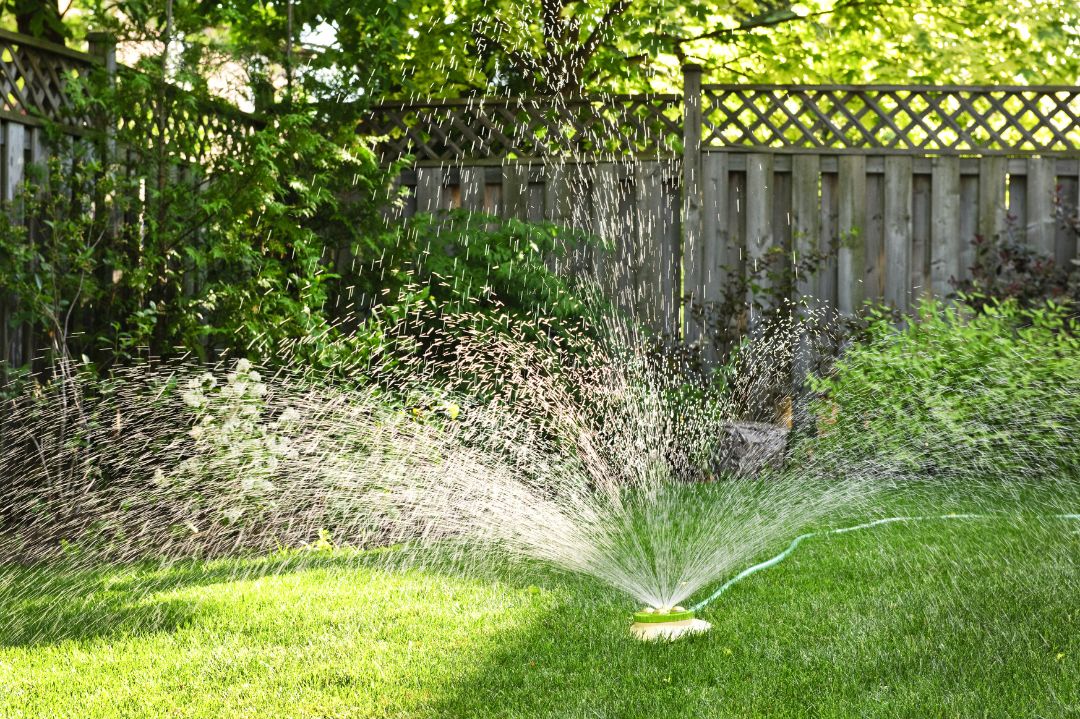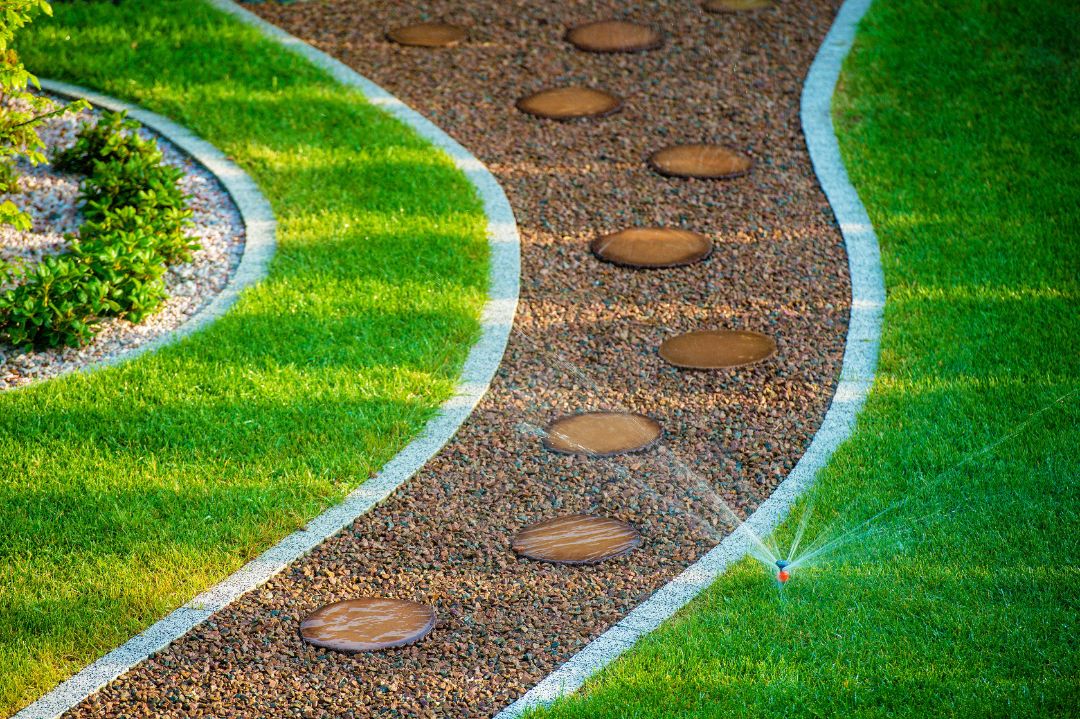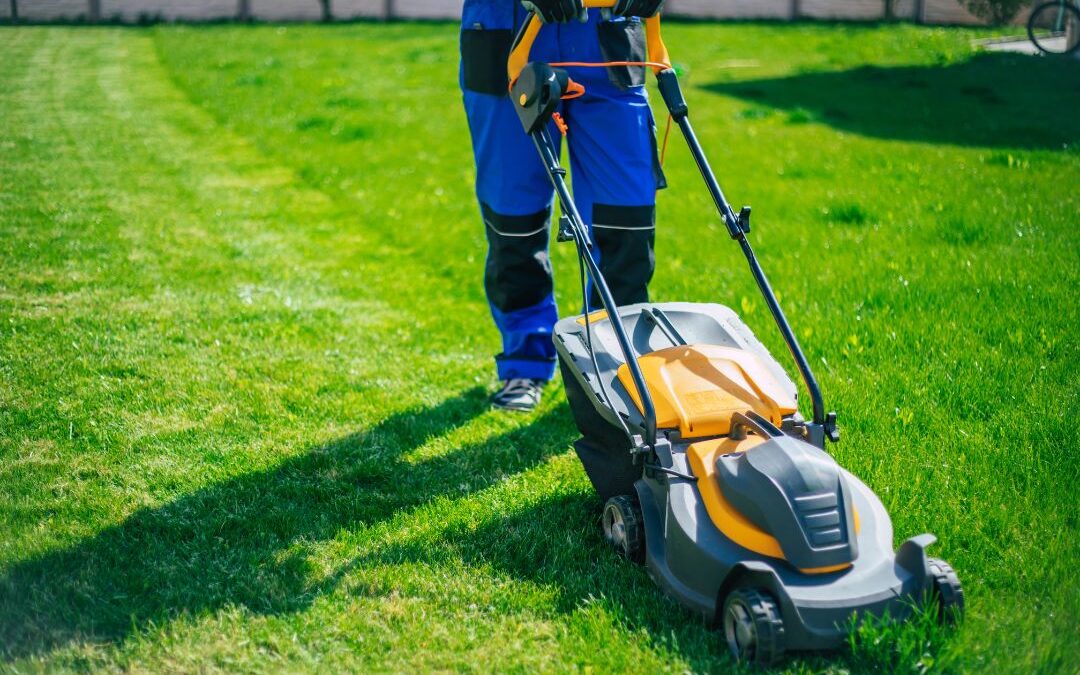Maintaining a lush, green lawn isn’t just about appearances—it’s about health, functionality, and long-term value. In Northeastern Ohio, our unique seasonal changes require a lawn care approach that evolves throughout the year. Whether you’re a DIY enthusiast or prefer to leave it to the pros, having a clear lawn maintenance schedule is key.
At Unique Landscaping, we help homeowners across the region achieve healthier, greener lawns with tailored maintenance plans. If you’re wondering when mowing season starts, what to do each month, or how to care for your lawn through all four seasons, this guide has you covered.
Understanding Ohio’s Lawn Growing Season
Ohio lawns are made up mostly of cool-season grasses like Kentucky Bluegrass, Fescue, and Ryegrass, which thrive in moderate temperatures. The active growing periods are spring and fall, while summer brings heat stress and winter brings dormancy.
So, when does the mowing season start in Ohio?
Typically, mowing begins in April, depending on the weather. Grass begins growing when soil temperatures consistently reach about 50°F. Mowing usually continues until early November.
Month-by-Month Lawn Care Calendar
To take the guesswork out of lawn maintenance, follow this seasonal approach tailored for Ohio. Here’s a snapshot of what to expect and when.
- March–April: Spring cleanup, pre-emergent weed control, fertilization
- May–June: Weed control, mowing, fertilizing, pest monitoring
- July–August: Watering, heat stress management, minimal fertilizing
- September–October: Core aeration, overseeding, fall fertilization
- November–February: Final mow, equipment maintenance, snow prep
Spring Lawn Care Schedule in Ohio (March–May)
Spring is the most important season to set the foundation for a healthy lawn. With warming soil and increased growth, now is the time to clean up, feed, and prepare for summer.
March – Early April
- Clean Up Debris: Remove fallen branches, leaves, and winter debris.
- Dethatching (if needed): If your lawn has a thick thatch layer, dethatching to improve nutrient and water flow.
- Pre-Emergent Herbicide: Apply to prevent crabgrass and broadleaf weeds before they germinate.
- Soil Test: Ideal time to assess nutrient levels and pH balance.
Mid-April – May
- Fertilize: Apply a nitrogen-rich fertilizer to stimulate growth and green-up.
- First Mow: Begin mowing when grass hits about 3 inches. Never cut more than 1/3 of the height at once.
- Spot Weed Control: Apply post-emergent herbicides where needed.
- Aeration (optional): Spring aeration is okay if the lawn is compacted, though fall is better.
Spring Tips:
- Don’t over-fertilize too early—it can promote weak top growth.
- Keep mower blades sharp for clean cuts that prevent disease.
Summer Lawn Care Schedule in Ohio (June–August)

Summer brings heat and occasional drought, which can stress even the healthiest lawns. Focus your efforts on watering, mowing smart, and pest control.
June
- Continue Mowing: Raise your mower deck to 3–3.5 inches to shade roots and retain moisture.
- Slow-Release Fertilizer: Apply a balanced fertilizer if needed, but only if the lawn is well-irrigated.
- Weed Management: Spot-treat stubborn weeds.
July–August
- Watering: Provide 1–1.5 inches of water per week, either from rainfall or irrigation. Water early in the morning to prevent disease.
- Avoid Stressing Grass: Postpone fertilizing and overseeding until cooler weather.
- Monitor for Pests: Watch for grubs, chinch bugs, or signs of fungus.
- Limit Foot Traffic: Lawns are more fragile in the summer heat.
Summer Tips:
- Use a mulching mower to return nutrients to the soil.
- Consider skipping mowing during drought stress.
Fall Lawn Care Schedule in Ohio (September–November)
Fall is Ohio’s best season for lawn improvement. Cooler temperatures and rainfall create the perfect environment for seeding, fertilizing, and repairing summer damage.
September
- Core Aeration: Loosen compacted soil and improve root development.
- Overseeding: Fill in thin or bare spots with cool-season grass seed.
- Starter Fertilizer: Apply a fertilizer high in phosphorus to support new roots.
- Weed Control: Apply broadleaf weed killer to eliminate dandelions, clover, and plantain.
October–Early November
- Final Fertilization: Apply a “winterizer” fertilizer to strengthen roots before dormancy.
- Mowing: Continue mowing until the grass stops growing. Gradually reduce the mower height for the final cut.
- Leaf Removal: Keep your lawn clear of leaves to prevent fungal issues.
Fall Tips:
- Fall is the best time for major lawn renovations.
- Ideal seeding temperatures are between 50°F and 65°F.
Winter Lawn Care Schedule in Ohio (December–February)
Your lawn may go dormant in winter, but that doesn’t mean your lawn care should. A few smart steps now will set you up for success in spring.
December–February
- Limit Traffic: Avoid walking on frozen turf to prevent compaction and crown damage.
- Tool Maintenance: Sharpen mower blades and prep your tools for spring.
- Dormant Weed Control: Apply dormant herbicides in early December if needed.
- Plan Ahead: Winter is the perfect time to plan your spring lawn care schedule with a pro.
Winter Tips:
- Don’t pile snow from driveways onto grass areas.
- Avoid using de-icers near lawn edges.
Common Lawn Problems in Ohio & How to Fix Them

Every lawn faces challenges, but with proactive care, most issues are easily preventable or fixable.
- Thatch Buildup – Fix: Dethatching or core aeration
- Compacted Soil – Fix: Annual aeration
- Grub Damage (Brown Patches) – Fix: Preventative grub control in July
- Bare Spots – Fix: Overseed in fall or spring
- Weeds (Clover, Crabgrass, Dandelions) – Fix: Apply pre-emergent in early spring and post-emergent in fall
Need help diagnosing lawn issues? Unique Landscaping offers professional lawn assessments and custom solutions.
Essential Tools for Lawn Care Success
You don’t need a shed full of tools to care for your lawn, but having these essentials will make a big difference.
- Lawn Mower (with adjustable height)
- Fertilizer Spreader (broadcast or drop)
- Core Aerator
- Weed Sprayer
- Rake and Dethatcher
- Soil Test Kit
Pro Tip: Let a professional handle aeration, weed control, and fertilization for better results with less hassle.
Why Hire a Professional Lawn Care Company?
Professional lawn care services can take your lawn to the next level—without the hassle of doing it all yourself.
- Saves Time: We handle everything so you don’t have to.
- Better Results: We use commercial-grade products and equipment.
- Knowledge of Local Conditions: We understand Northeast Ohio’s weather, soil, and grass types.
- Customized Plans: We create lawn care schedules based on your specific property.
Let Unique Landscaping take the stress out of lawn care. Contact us for a free consultation and customized maintenance plan!
Build Your Lawn Care Routine with the Seasons
Caring for your lawn in Ohio is all about timing, consistency, and adaptability. By following a seasonal approach and sticking to a month-by-month calendar, you’ll enjoy a lush, healthy lawn year-round.
If you’re ready to improve your lawn and want expert help every step of the way, Unique Landscaping is here for you. From spring prep to winter wind-down, we provide reliable, local lawn care services across Northeast Ohio.

